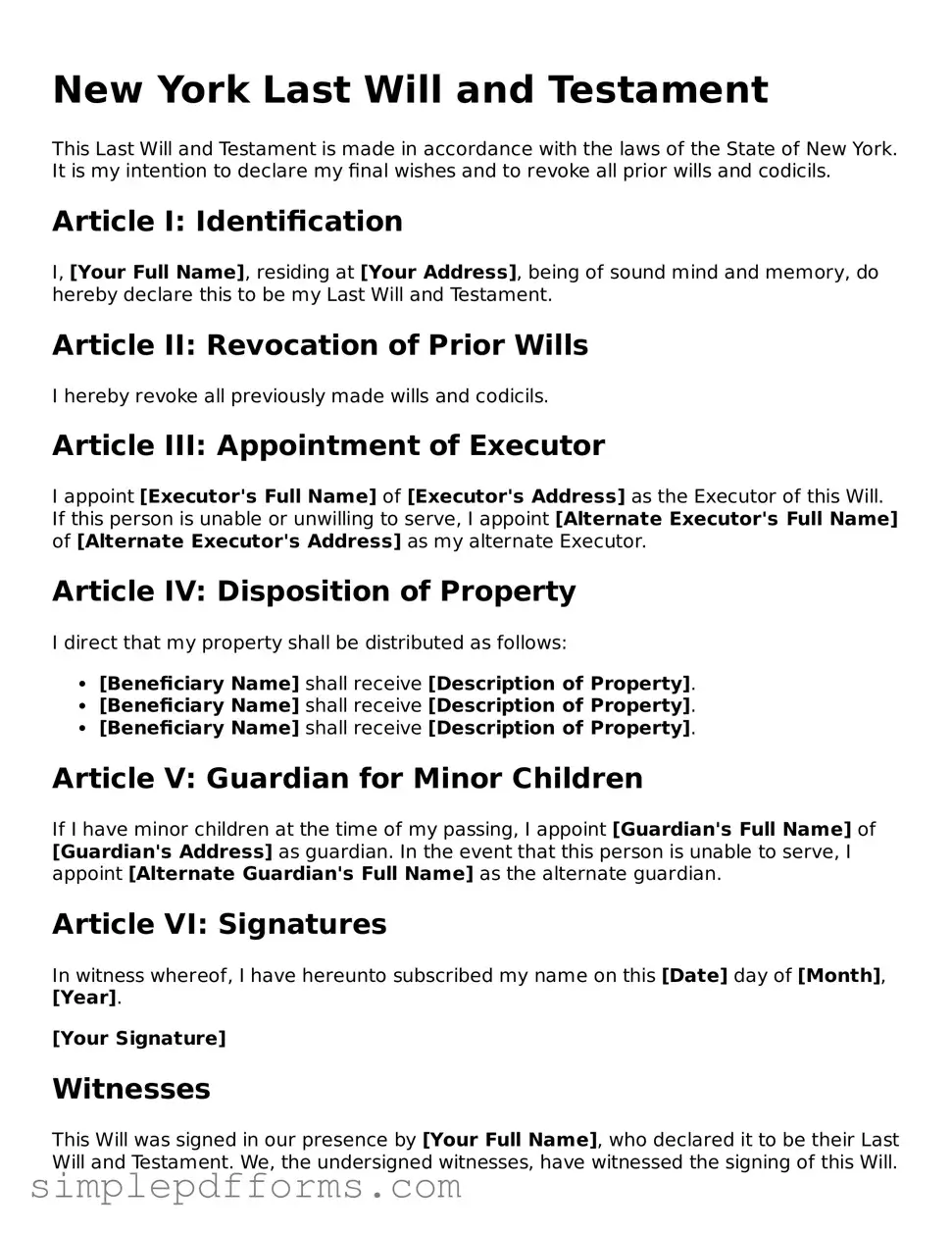New York Last Will and Testament
This Last Will and Testament is made in accordance with the laws of the State of New York. It is my intention to declare my final wishes and to revoke all prior wills and codicils.
Article I: Identification
I, [Your Full Name], residing at [Your Address], being of sound mind and memory, do hereby declare this to be my Last Will and Testament.
Article II: Revocation of Prior Wills
I hereby revoke all previously made wills and codicils.
Article III: Appointment of Executor
I appoint [Executor's Full Name] of [Executor's Address] as the Executor of this Will. If this person is unable or unwilling to serve, I appoint [Alternate Executor's Full Name] of [Alternate Executor's Address] as my alternate Executor.
Article IV: Disposition of Property
I direct that my property shall be distributed as follows:
- [Beneficiary Name] shall receive [Description of Property].
- [Beneficiary Name] shall receive [Description of Property].
- [Beneficiary Name] shall receive [Description of Property].
Article V: Guardian for Minor Children
If I have minor children at the time of my passing, I appoint [Guardian's Full Name] of [Guardian's Address] as guardian. In the event that this person is unable to serve, I appoint [Alternate Guardian's Full Name] as the alternate guardian.
Article VI: Signatures
In witness whereof, I have hereunto subscribed my name on this [Date] day of [Month], [Year].
[Your Signature]
Witnesses
This Will was signed in our presence by [Your Full Name], who declared it to be their Last Will and Testament. We, the undersigned witnesses, have witnessed the signing of this Will.
- [Witness 1 Full Name], residing at [Witness 1 Address].
- [Witness 2 Full Name], residing at [Witness 2 Address].
